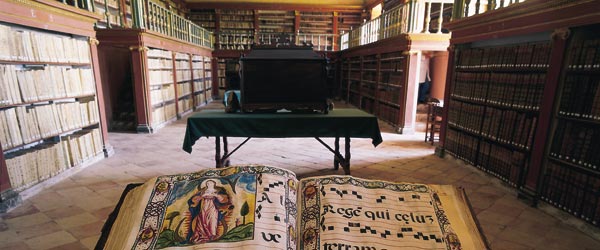San Millán de la Cogolla: the birthplace of the Spanish language
Would you like to discover the birthplace of the Spanish language? This is San Millán de la Cogolla, declared a World Heritage site due to its outstanding artistic, literary and –naturally– its linguistic importance.
Northern Spain, in the region of La Rioja, is the location of the birthplace of the Spanish language. In a beautiful valley sheltered by woods and mountains and a mere 42 kilometres from Logroño lies San Millán de la Cogolla.
The monasteries of Yuso and Suso stand serene and majestic, almost as though aware of their own significance. Between these walls were written the first words in the romance language we now know as Spanish: the so-called Glosas Emilianenses.
Furthermore, the first known poet of Spanish literature, Gonzalo de Berceo wrote his verses here. Breathe in the atmosphere of this unique site: no other language with the importance and breadth of Spanish can be associated with such a specific place.
In the Middle Ages the monasteries became centres for culture. Moralising religious and secular books were copied and illustrated in the scriptoria of these institutions. It was in the 11th century, in the monastery of Suso, when the copiers became aware that the Latin texts were difficult to understand, and began to write clarifying sentences in the margins in the vernacular language of the common people, the romance language. The first of these annotations are known as the Glosas Emilianenses. In addition to its historic value, there are other reasons for visiting the monastery, not least being its architecture. It was built in the 6th century by the mountainside in the caves inhabited by hermits in the past. It features three different styles, Visigothic, Mozarabic and Romanesque, and has an intriguingly chaotic and labyrinthine structure.
A short distance away towards the bottom of the valley, you'll find the treasures of the Yuso monastery, which was founded in the 11th century. The library, conserved as it was at the end of the 18th century, contains a priceless collection of books. You'll also be able to see the extraordinary urn made with gold, ivory and precious stones used to safeguard the relics of San Millán.
In this site, set in a unique natural landscape, you'll find the birthplace of a cultural treasure and a shrine to human understanding. It is well worth setting aside some time to come and be enchanted by the simple grandiosity of the town of San Millán de la Cogolla.







